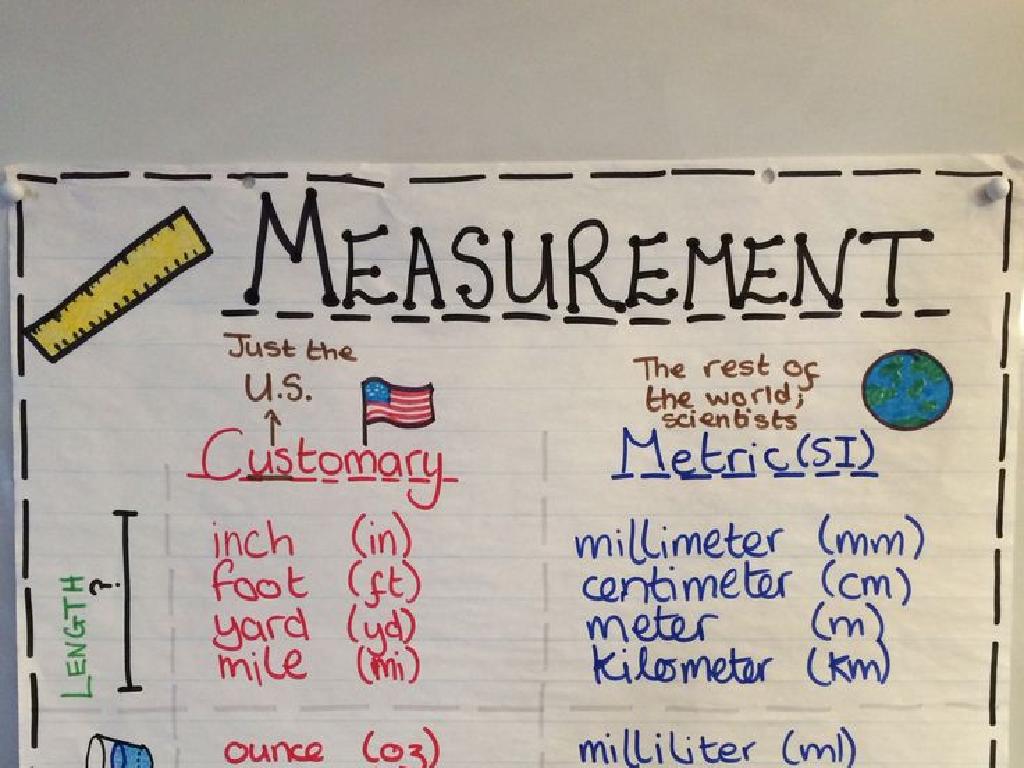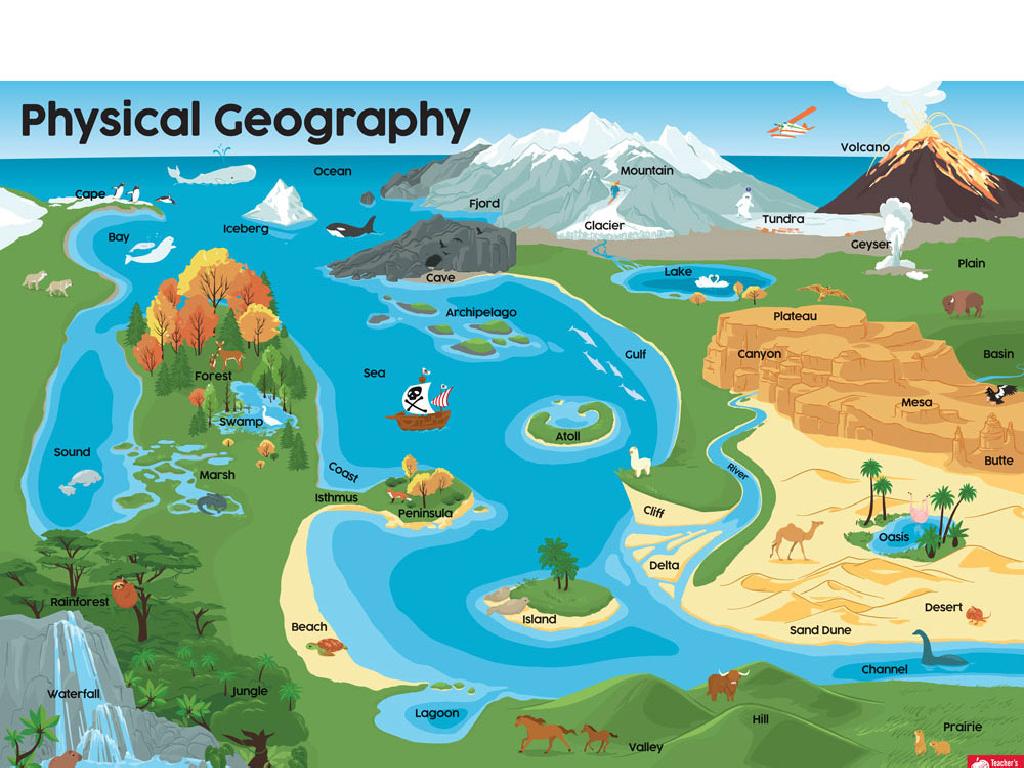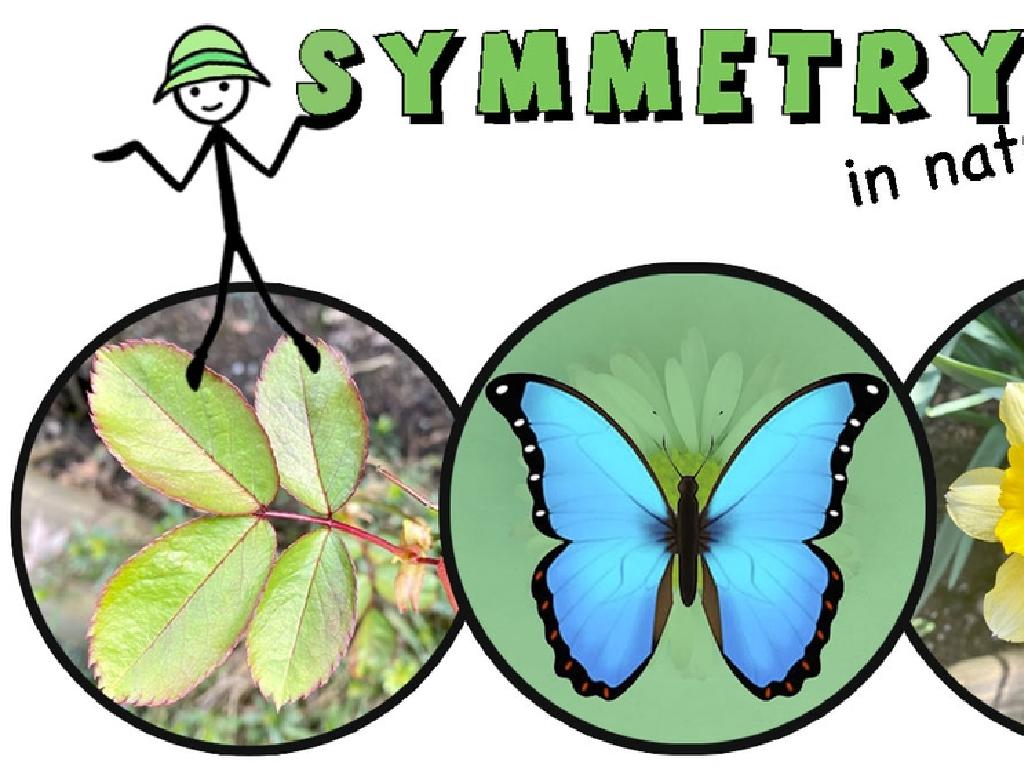Energy And Matter In Biological Systems
Subject: Science
Grade: High school
Topic: Biology
Please LOG IN to download the presentation. Access is available to registered users only.
View More Content
Energy and Matter in Biological Systems
– Energy & matter sustain life
– All living organisms require energy and matter to perform life processes.
– Energy flow & matter cycling
– Ecosystems operate on energy inputs and outputs, with matter recycling.
– Metabolism: life’s chemical reactions
– Metabolism encompasses all chemical reactions within organisms.
– Photosynthesis vs. Cellular Respiration
– Photosynthesis converts light energy to chemical energy; respiration uses it to power activities.
|
This slide introduces the fundamental concepts of energy and matter in biological systems, emphasizing their importance in sustaining life. Students should understand that both energy and matter are essential for the growth, development, and maintenance of organisms. The flow of energy through food chains and the cycling of matter such as carbon and nitrogen through ecosystems are critical concepts. Metabolism refers to the myriad of chemical reactions that occur in cells, including photosynthesis and cellular respiration. Photosynthesis, performed by plants, algae, and some bacteria, captures energy from sunlight to produce glucose, while cellular respiration, occurring in most organisms, releases energy from glucose to fuel cellular activities. This slide sets the stage for a deeper exploration of each of these processes and their interconnections within the biosphere.
Metabolism: The Chemical Reactions in Cells
– Define metabolism in biology
– Metabolism: all chemical reactions in an organism that maintain life.
– Contrast catabolic and anabolic
– Catabolic pathways break down molecules, anabolic pathways build up.
– Metabolic process examples
– Cellular respiration, photosynthesis, protein synthesis.
– Metabolism’s role in life
|
Metabolism encompasses all the chemical reactions that occur within a cell or organism to sustain life. It’s a broad term that includes both catabolic and anabolic pathways. Catabolic pathways involve the breakdown of molecules to release energy, while anabolic pathways are the building-up processes that use this energy to synthesize essential compounds like proteins and nucleic acids. Examples of metabolic processes include cellular respiration in animals, photosynthesis in plants, and protein synthesis in all living organisms. Understanding metabolism is crucial for students as it underpins all biological activities and is fundamental to the study of biology. Encourage students to think of metabolism as a balancing act between energy release and energy utilization.
Photosynthesis: Harnessing Solar Power
– Photosynthesis process significance
– Photosynthesis converts solar energy into chemical energy, fueling plant life and, by extension, all life on Earth.
– Light-dependent reactions overview
– These reactions occur in the thylakoid membranes and produce ATP and NADPH, using light and water.
– Exploring the Calvin cycle
– The Calvin cycle takes place in the stroma, using ATP and NADPH to convert CO2 into glucose.
– Photosynthesis equation breakdown
– 6CO2 + 6H2O + light energy C6H12O6 + 6O2. It shows how carbon dioxide and water are transformed into glucose and oxygen.
|
This slide introduces the complex process of photosynthesis, emphasizing its critical role in converting light energy into chemical energy, which is essential for life on Earth. Begin with the overall significance of photosynthesis, highlighting its importance in the energy flow within ecosystems. Then, delve into the two main stages: the light-dependent reactions and the Calvin cycle, explaining their functions and where they occur within the plant cell. Finally, dissect the photosynthesis equation, ensuring students understand each component and the transformation of energy and matter that takes place. Encourage students to consider the global impact of photosynthesis on ecological systems and the Earth’s atmosphere.
Cellular Respiration: Energy Extraction
– Cells extract energy from glucose
– Glucose breakdown releases energy cells use for work
– Stages: Glycolysis, Krebs cycle, ETC
– Glycolysis splits glucose, Krebs cycle processes products, ETC generates ATP
– Cellular respiration equation
– C6H12O6 + 6O2 -> 6CO2 + 6H2O + Energy (ATP)
– Link between respiration & photosynthesis
– Photosynthesis produces glucose and O2, which are used in cellular respiration
|
This slide introduces the concept of cellular respiration, the process by which cells harvest energy stored in food. Begin with an overview of how glucose is broken down to release energy. Explain the three stages of cellular respiration: Glycolysis, the Krebs cycle, and the Electron Transport Chain (ETC), emphasizing the role of each stage in energy production. Present the chemical equation for cellular respiration, highlighting its components and the energy yield in the form of ATP. Draw connections between cellular respiration and photosynthesis, showing how the products of photosynthesis serve as inputs for respiration, thus illustrating the cyclical nature of energy transformation in biological systems. Encourage students to consider the efficiency of energy transfer during these processes and the importance of each stage in the overall energy economy of the cell.
Energy Transfer in Ecosystems
– Trophic levels in food chains
– Producers to apex predators: energy decreases up the chain
– Energy efficiency and pyramids
– Not all energy is transferred: some is lost as heat
– Decomposers’ role in ecosystems
– Break down dead material, returning nutrients to soil
– Energy flow through food webs
|
This slide aims to explain the concept of energy transfer within an ecosystem. Start by discussing trophic levels, which represent the hierarchical positions of organisms in a food chain. Emphasize that energy diminishes as it moves up the food chain, from producers to apex predators. Introduce energy pyramids to illustrate the concept of energy efficiency, highlighting that energy transfer between trophic levels is not 100% efficient, with a significant portion lost as heat. Explain the critical role of decomposers in breaking down dead organic material, which recycles matter and returns nutrients to the soil, maintaining the balance of the ecosystem. Use diagrams to visualize food chains and webs, and discuss the interconnectedness of different species within an ecosystem.
The Cycling of Matter in Ecosystems
– Significance of biogeochemical cycles
– Cycles maintain ecosystem balance by recycling nutrients
– Overview of carbon, nitrogen, water cycles
– Carbon cycle involves photosynthesis and respiration; nitrogen cycle includes nitrogen fixation; water cycle consists of evaporation, condensation, and precipitation
– Human impacts on these cycles
– Pollution, deforestation, and industrial activities disrupt cycles
– Environmental consequences
– Leads to climate change, biodiversity loss, and ecosystem degradation
|
This slide aims to educate students on the importance of biogeochemical cycles, which are crucial for sustaining life by recycling essential elements. The carbon cycle is driven by the processes of photosynthesis and respiration, the nitrogen cycle by nitrogen fixation, and the water cycle by the continuous movement of water through evaporation, condensation, and precipitation. Highlight how human activities such as burning fossil fuels, deforestation, and excessive use of fertilizers can negatively impact these cycles, leading to severe environmental issues like climate change, loss of biodiversity, and overall ecosystem health. Encourage students to think critically about how their actions can affect these cycles and discuss ways to minimize negative impacts.
Class Activity: Energy Flow and Matter Cycling in Ecosystems
– Create food web models in groups
– Trace energy flow and matter cycle
– Discuss system interdependence
– How does altering one species affect others?
– Reflect on ecosystem changes
– Consider factors like extinction or pollution
|
This class activity is designed to help students understand the complex interactions within ecosystems. By creating food web models, students will visualize how energy flows from one organism to another and how matter cycles through living and non-living parts of the ecosystem. They will trace the paths of energy and matter to see the interconnectedness of species. The discussion should focus on the balance of ecosystems and how changes, such as the removal or addition of a species, can have cascading effects. Possible activities include: 1) Building a physical model with arrows and labels, 2) Drawing diagrams on paper, 3) Using digital tools to create interactive food webs, 4) Role-playing different organisms in a food web, 5) Creating a cause-and-effect storyboard of changes in the ecosystem.






